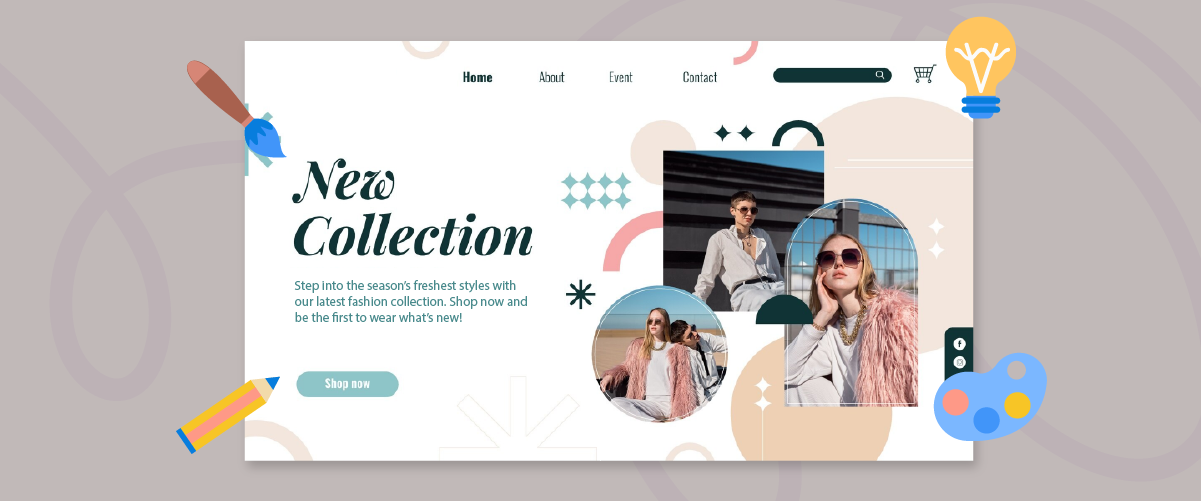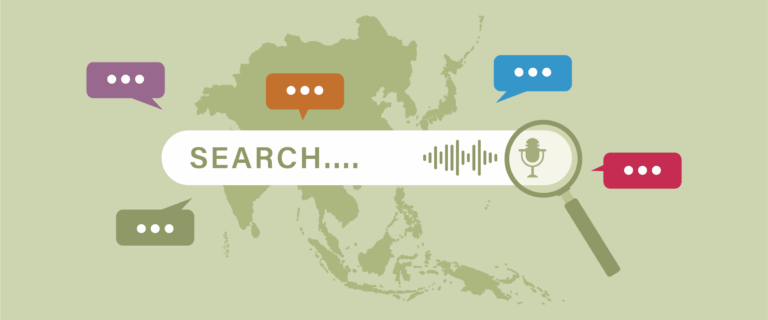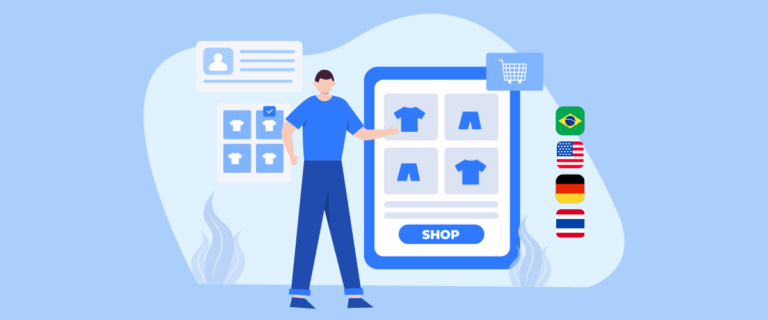Do you have a fashion business and want to reach a wider range of customers? Building a fashion e-commerce website is the right step. However, behind the website’s beautiful appearance, many challenges need to be overcome.
Everything requires careful planning, from choosing the right platform to optimizing product appearance. This article will guide you through designing a fashion eCommerce website for your business!
Why should you sell fashion online?

Having an online store for your fashion business today is not just an option but a necessity. The fashion world has undergone a significant digital transformation, and e-commerce is the solution. By opening an online store, you not only reach a wider market but also open up opportunities for rapid growth and development.
Imagine that with an online store, international customers worldwide can access your fashion products for 24 hours. Your store’s physical location no longer limits you. In addition, your operational costs are much more efficient. You don’t need to rent a large space, pay as many employees as a physical store, or consider other operational costs such as electricity and water.
In addition, the biggest advantage of having an online store is that you can get very detailed customer data. This data can include product preferences, shopping behavior, and your customers’ demographics. You can develop a more effective and personalized marketing strategy with this data. Imagine knowing what products your customers like the most, when they usually shop, and which marketing channels are most effective.
Best practices for design a Fashion eCommerce website

Let’s explore the best practices for designing a stunning and effective fashion eCommerce website. We’ll cover everything from deciding what to sell to promoting your site, ensuring you have all the tools to succeed in the competitive online fashion market.
1. Decide what you want to sell and audience
When starting your fashion eCommerce journey, the first step is to determine what you want to sell and who your target audience is. This decision will shape your entire business strategy.
Begin by considering your passion and expertise in fashion. Are you interested in trendy streetwear, luxurious accessories, or sustainable clothing? Your interest will fuel your motivation and help you connect with your audience authentically.
Next, research your target market. Understanding your audience’s preferences, needs, and purchasing behaviours is crucial. For example, if you’re targeting young professionals, you might focus on versatile work-to-weekend wear. You could explore sustainable and ethically produced fashion items if your audience is eco-conscious millennials.
Consider factors like:
- Age range
- Gender
- Income level
- Lifestyle
- Fashion preferences
For instance, if you sell vintage-inspired dresses to women aged 25-40 who appreciate unique, retro styles, this clarity will guide your product selection, marketing strategies, and website design.
Remember, you don’t have to limit yourself to a single product type. Start with a core product line and expand as you grow. The key is to have a clear vision of what you’re selling and to whom, which will help you make informed decisions throughout your eCommerce journey.
2. Gather high-quality photo products
In the fashion eCommerce, visual appeal is paramount. High-quality product photos can make or break your online store. They’re not just images; they’re your virtual salespeople, showcasing your products in the best light possible.
When gathering product photos, consider these key aspects:
- Maintain a consistent style across all your product images. This could mean using the same background, lighting setup, or editing style. Consistency helps create a cohesive look for your brand.
- Provide various views of each product. For clothing, this might include front, back, and side views, as well as close-ups of fabric texture or unique details.
- Where possible, show your clothing items on models. This helps customers visualize how the garments fit and hang on real people.
- Ensure your eCommerce platform supports high-resolution images that allow customers to zoom in and examine details closely.
- Include some lifestyle images that show the products you are using. For example, if you’re selling beachwear, you might include photos of models wearing your items at the beach.
- Ensure your product photos accurately represent the true colors of your items. Poor color representation can lead to returns and dissatisfied customers.
If you’re not confident in your photography skills, consider hiring a professional photographer. Due to mismatched expectations, the investment can pay off in increased sales and fewer returns.
Remember, your product photos are often the first and sometimes only impression a potential customer has of your products. Make sure they’re presenting your fashion items in the best possible light!
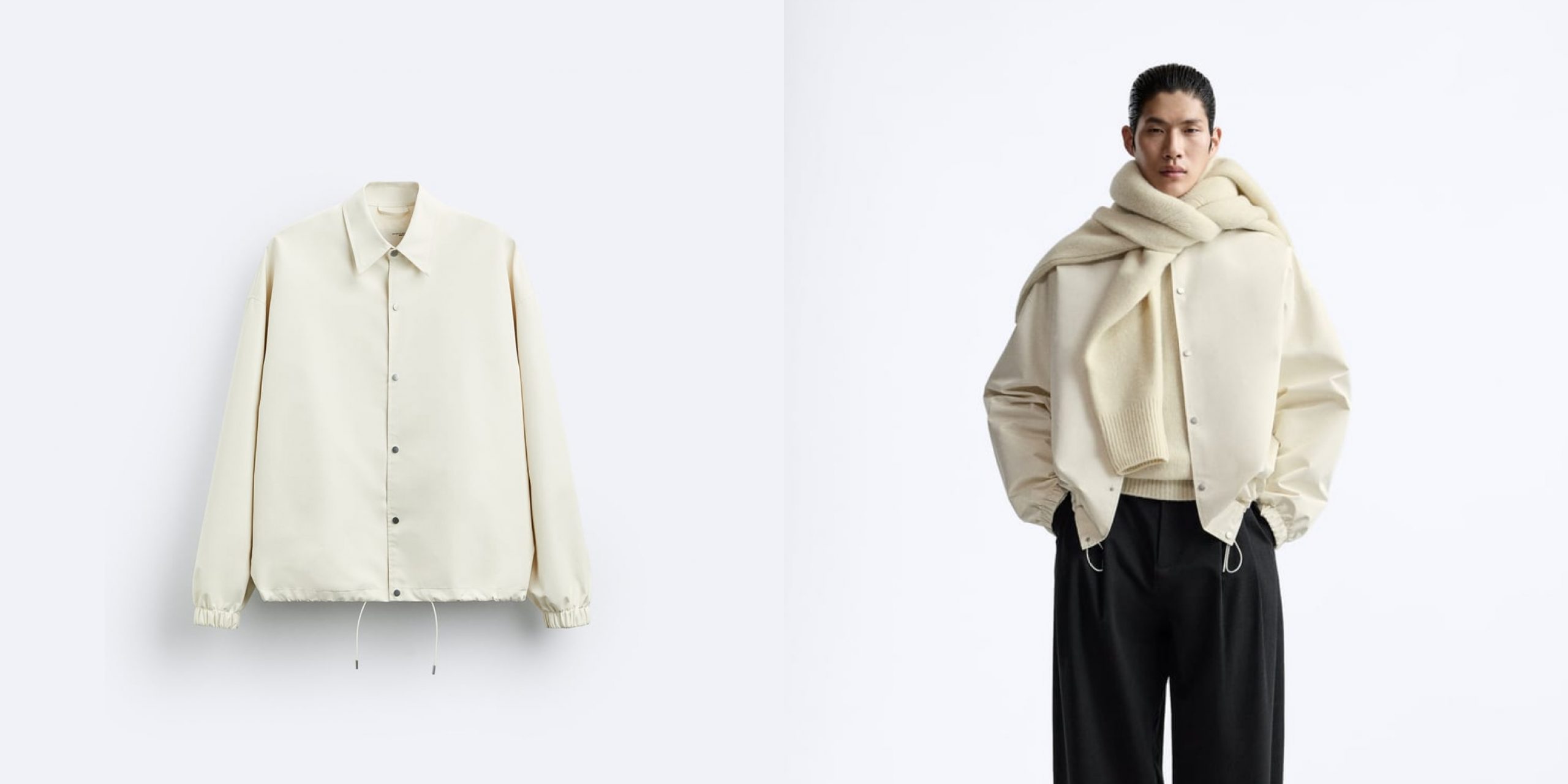
3. Choose the right eCommerce platform
Selecting the right eCommerce platform is crucial to significantly impacting your online fashion business. The platform you choose will determine how you manage your store, process payments, and interact with customers.
When evaluating eCommerce platforms, consider the following factor.
- Look for a user-friendly platform that doesn’t require extensive technical knowledge. You want to spend time running your business, not figuring out complex software.
- With more people shopping on mobile devices, ensure your chosen platform optimizes your store for mobile viewing.
- Your platform should allow you to customize your store’s look and feel to match your brand identity.
- Check that the platform supports various payment options for customer preferences.
- Look for features that help you manage your stock levels efficiently.
- Good SEO features will help your store rank well in search engine results.
- Choose a platform that can grow with your business.
Some popular eCommerce platforms for fashion businesses include.
- Shopify: Known for its ease of use and extensive app store
- WooCommerce: A good option if you’re familiar with WordPress
- Magento: Offers robust features for larger businesses
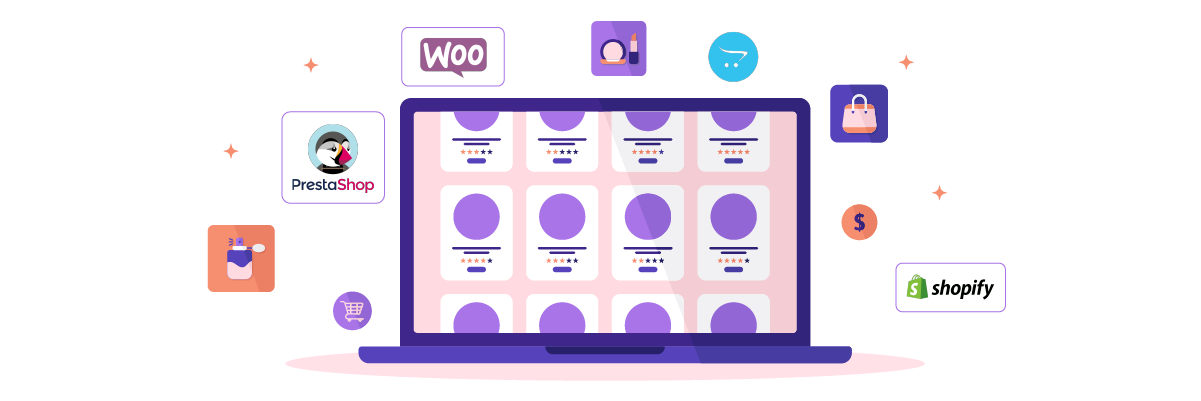
For example, Squarespace might be a good fit if you’re just starting and want an easy-to-use platform with beautiful templates. On the other hand, if you plan to scale quickly and need more advanced features, Shopify or Magento could be better options.
Remember, the right platform for you will depend on your specific needs, technical skills, and business goals. Take the time to research and even test out a few options before making your final decision.
4. Choose a website template
Selecting the right website template is crucial for creating a visually appealing and functional fashion eCommerce site. Your template is the foundation of your website’s design and can significantly impact user experience and brand perception.
Take these factors when selecting a template:
- Brand alignment: The template should reflect your brand’s personality. If you’re selling luxury items, look for templates with a sleek, sophisticated design. You might prefer templates with a more relaxed, artistic feel for a bohemian clothing line.
- Mobile responsiveness: Ensure the template is fully responsive and looks great on all devices, from desktop computers to smartphones.
- Customization options: Look for templates that allow you to easily customize colors, fonts, and layouts to match your brand identity.
- Product display: The template should effectively showcase your fashion items. Look for features like image zoom, multiple product views, and easy-to-navigate product galleries.
- Loading speed: Fashion websites often have many high-quality images. Choose a template optimized for fast loading to ensure a smooth user experience.
- Navigation: The template should offer intuitive navigation, making it easy for customers to find what they want.
Remember, while the template provides the basic structure, you’ll want to customize it to make it uniquely yours. Don’t be afraid to experiment with different layouts and designs until you find one that perfectly represents your brand and appeals to your target audience.
You can buy website templates on sites like ThemeForest or Envato, where you can find various templates that suit your platform.
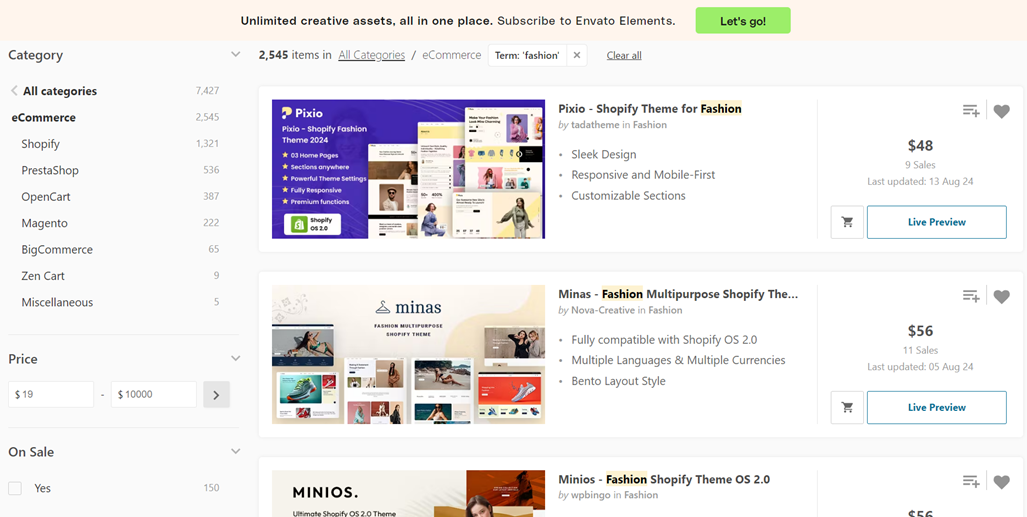
5. Adding pages website
Creating the right pages for your fashion eCommerce website is essential for providing a comprehensive and user-friendly shopping experience. While the specific pages you need may vary depending on your business, here are some key pages to consider:
- Homepage: This is your storefront. Make it visually appealing with high-quality images of your best products. Include clear navigation and calls to action to guide visitors to your product pages or collections.
- Product pages: These should include detailed product descriptions, high-quality images from multiple angles, size guides, and customer reviews, if available.
- Category pages: Organize your products into categories (e.g., dresses, tops, accessories) for easy navigation.
- About us: Tell your brand’s story. This helps build a connection with your customers and sets you apart from competitors.
- Contact page: Provide multiple ways for customers to reach you, such as email, phone, and a contact form.
- FAQ page: Answer common questions about sizing, shipping, returns, etc. This can reduce customer service inquiries and improve user experience.
- Blog: Share fashion tips, styling ideas, and brand news to engage your audience and improve SEO.
For example, on the following FAQ page. You can see how to organize the FAQ page based on the categories shown in the image.
The following FAQ pages are organized with clear categories such as “US Phones”, “US Shipping”, and “US Returns” to answer common customer questions specific to the United States market. You can include a “Purchase for US, UK, and CA” section for international customers to clarify regional policies. “Size” will be an important category for any fashion e-commerce site, helping customers choose the right size.

6. Use a domain name according to the brand name
Choosing the right domain name for your fashion eCommerce website is crucial in establishing your online presence. Your domain name is often the first interaction customers have with your brand, so it’s important to make it count.
Here are some tips for selecting a domain name.
- Your domain name should be the same as your brand name. For example, if your fashion brand is called “Chic Couture,” aim for www.chiccouture.com.
- Choose a domain name that’s easy to spell, pronounce, and remember. Avoid using numbers or hyphens, which can be confusing.
- Include relevant keywords in your domain. For instance, “StyleSavvyBoutique.com” includes the keyword “boutique,” which can help with SEO.
- While .com is the most common and often preferred extension, don’t be afraid to consider alternatives like .fashion, .style, or .boutique if they better fit your brand.
- Use domain search tools to check if your desired name is available. If it’s taken, consider slight variations or different extensions.
- Choose a domain name that can grow with your business. Avoid names that are too specific to a particular product line or trend.
- Consider purchasing common misspellings of your domain name and additional extensions to protect your brand and redirect users to your main site.
For example, if your brand name is “Urban Threads,” you might choose www.urbanthreads.com as your primary domain. To protect your brand, you could also consider purchasing www.urbanthreads.fashion or www.urban-threads.com.
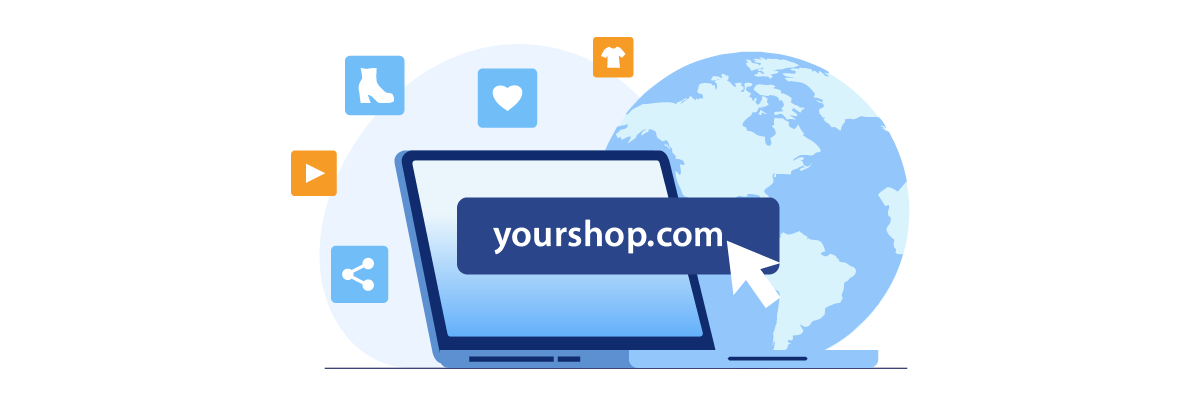
7. Designing a user-friendly interface
Designing a user-friendly interface is crucial for the success of your fashion eCommerce website. A well-designed interface looks appealing and makes it easy for customers to navigate your site, find products, and complete purchases.
Here are some key principles to follow when designing your interface:
- Use spaces and avoid information overload.
- Make sure the navigation menu is clear and easy to find
- Use CTAs with contrasting colors, concise language (“Buy Now”).
- Responsive design optimization for all devices.
- Ensure branding consistency such as colors, fonts, uniform design elements.
- Use high-quality product images
- Product descriptions that are easy to read and understand
- The checkout process is simple and uncomplicated
- Show prices & availability clearly
For example, the following jewelry brand website design. They choose clean backgrounds with lots of white space to make your product images stand out. The navigation menu may include categories such as “Necklaces,” “Earrings,” and “Bracelets.” This makes it easier for visitors to find the products they want.
Images of high-quality jewelry are also highlighted on the page, thereby arousing customers’ desire to shop.
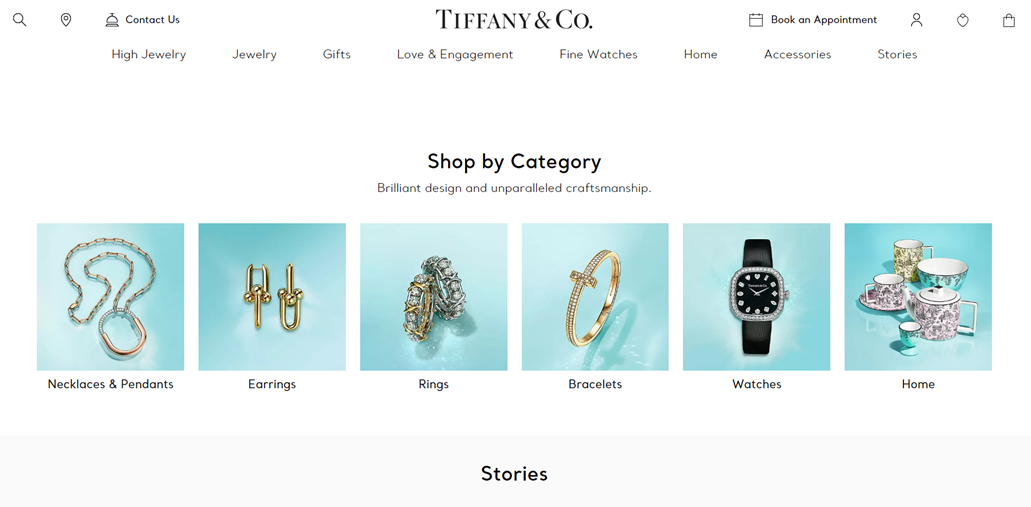
8. Connect with payment partners
Connecting with the right payment partners is crucial for providing a seamless checkout experience for your customers. The easier it is for customers to pay, the more likely they are to complete their purchases.
Here are some key considerations when setting up payment options.
- Provide various payment options (credit/debit card, PayPal, installments, bank transfer)
- Choose a gateway that is secure, easy, reasonable fees (Stripe, Square, PayPal)
- Provide multi-currency support if necessary.
- Ensure a smooth payment process across all devices.
- Explain taxes and shipping costs beforehand.
- Make sure it is compatible with your e-commerce platform.
For example, let’s say you’re using Shopify as your eCommerce platform. You might set up Shopify Payments (powered by Stripe) as your primary payment gateway, which allows you to accept all major credit cards. You could also add PayPal as an alternative option, and if you’re targeting younger consumers, you might include a Buy Now, Pay Later option like Afterpay.
Remember, the goal is to make the payment process as smooth and trustworthy as possible. Regularly review your payment options and consider adding new methods as your business grows and payment technologies evolve.
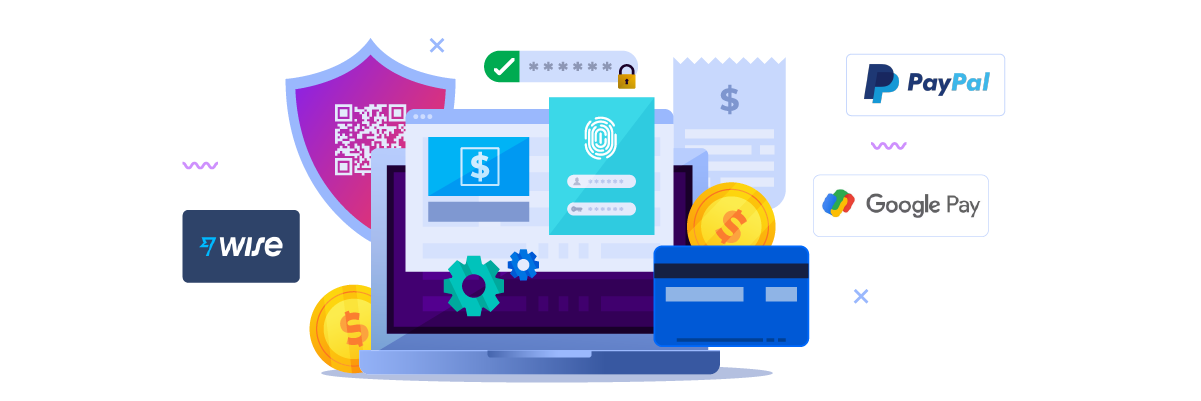
9. Add your products
Adding products to your fashion eCommerce website is crucial in setting up your online store. This process involves more than uploading photos and setting prices—creating compelling product listings that entice customers to purchase.
Here’s how to effectively add products to your site:
- Categorize: Before you start, categorize your products (e.g., dresses, tops, accessories) to make the process more manageable.
- Create detailed product descriptions: Use clear, engaging language to describe each item, nclude key details like materials, care instructions, and sizing information
- Use high-quality images: Upload multiple photos showing different angles and detail, ensure images are high-resolution and zoomable.
- Set accurate pricing: Consider your costs, competitors’ pricing, and desired profit margin. If you offer discounts, clearly display both the original and sale price
- Manage inventory: Set up inventory tracking to avoid overselling. Consider using a ‘low stock’ indicator to create urgency
- Use product variants: Set up options for different sizes, colors, or styles Ensure each variant has its SKU for accurate inventory management
- Optimize for search: Use relevant keywords in your product titles and descriptions. Add ALT text to images for better SEO.
- Include customer reviews: Set up a system for collecting and displaying customer reviews Respond to reviews to show engagement with customers
For example, consider one of the following shirt fashion products from untuckit.com. This product has clear image quality and a complete description starting from the size and fit guide.
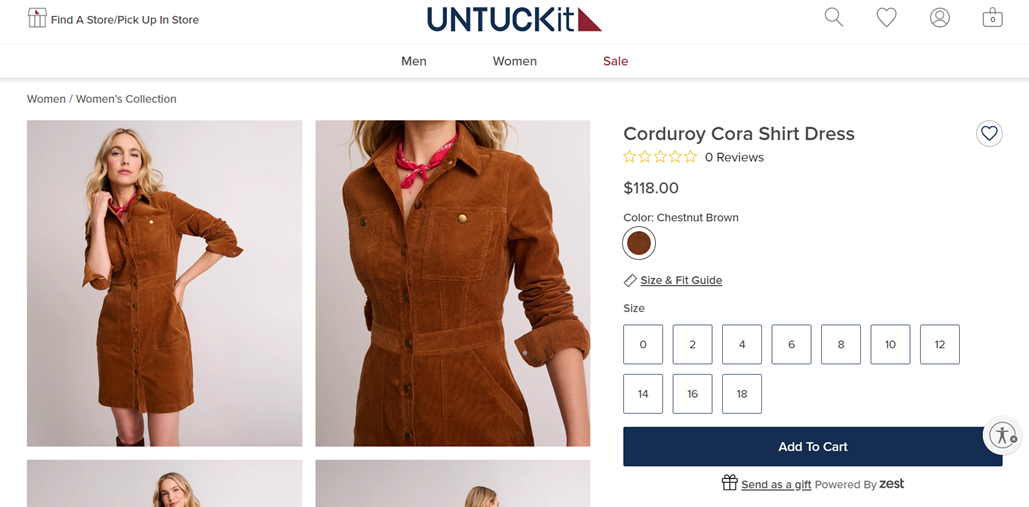
It is also equipped with information on care instructions, shipping & returns, and suitability information.
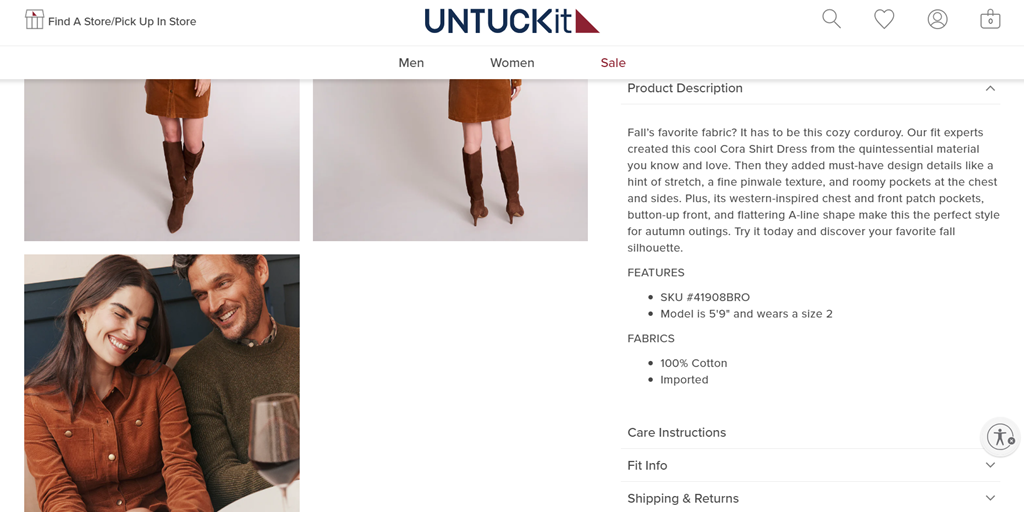
10. Set shipping rates and locations
Setting up your shipping strategy is crucial to running a successful fashion eCommerce business. It affects your profit margins and customer satisfaction and can influence purchasing decisions. Here’s how to approach setting shipping rates and locations:
- Determine your shipping zones: Decide where you’ll ship to (domestic, international, or both). Create group locations into zones based on shipping costs and times
- Choose your shipping methods: You can choose standard shipping, express or overnight shipping, or local pickup (if you have a physical location)
- Calculate shipping costs: Consider the weight and dimensions of your products. Get quotes from different carriers (e.g., USPS, FedEx, UPS).
- Set your shipping rates: Choose flat rate shipping, free shipping, tiered shipping, or real-time carrier rates.
- Consider offering free shipping: Set a minimum order value for free shipping to encourage larger purchase and limit free shipping to certain products or locations
- Be transparent about shipping times: Provide estimated delivery dates at checkout, send tracking information once orders are shipped
- Handle international shipping carefully: Research customs regulations and duties for each country and communicate any additional fees the customer may incur.
For example, if you’re a U.S.-based fashion boutique. You might offer:
- Free standard shipping on all domestic orders over $100
- A flat rate of $7.95 for standard domestic shipping on orders under $100
- Express shipping option for $15.95
- International shipping to Canada and the UK, with rates calculated based on weight
Remember to review and adjust your shipping strategy regularly. As your business grows, you can negotiate better rates with carriers or expand your shipping zones. When setting shipping rates and policies, always aim to balance customer satisfaction with your business needs.

11. Add multi-language for global
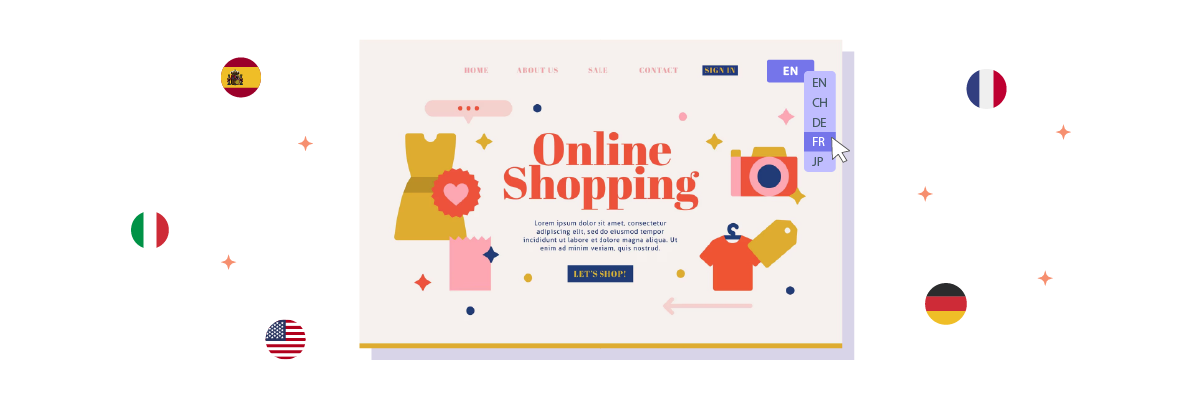
Adding multi-language to your eCommerce support to your website is smart if you target a global audience. It shows respect for your international customers and can significantly boost your sales in non-English speaking markets. Here’s how to approach adding multi-language support.
- Identify target markets: Research which countries are most likely to buy your products, prioritize languages based on your target markets and potential sales
- Choose a translation method: For ideal accuracy, you can use a professional translator, but this can be costly. Machine translation with human review is more affordable, but it requires careful checking. One of the automatic translations is the Linguise translation service. You can consider this as it integrates with eCommerce platforms like Shopify, WooCommerce, etc.
- Implement a language switcher: Place it prominently in the header or footer of your site, use language names in their native script (e.g., “Español” instead of “Spanish”). When you use Linguise to make your website multilingual, it also provides a customized language switcher to add languages according to your needs. Here’s an example.
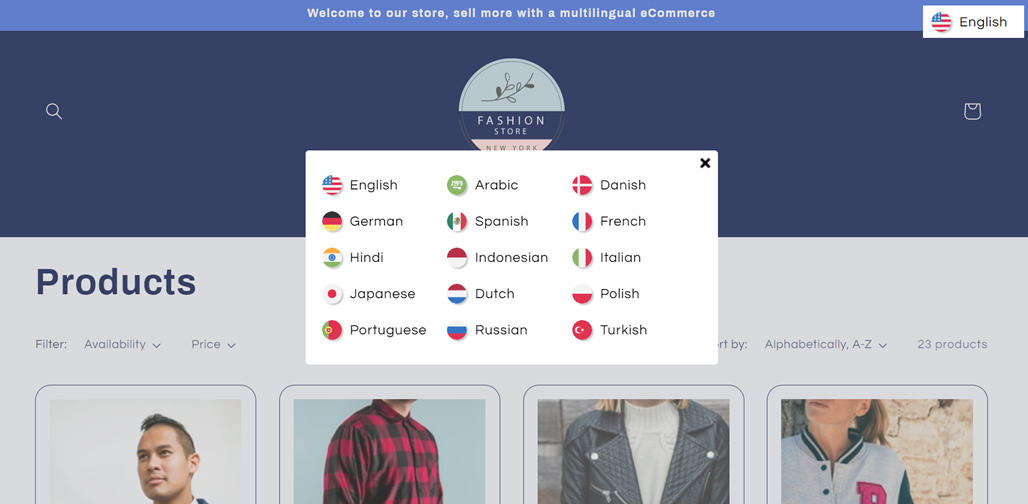
- Translate key elements: Product descriptions and names, category names and navigation menus, checkout process and payment information, customer service pages (FAQs, returns policy, etc.)
- Separate domains or subdomains: for example, fr.yourbrand.com for French or yourbrand.de for German.
- Optimize for international SEO: Research keywords in each target language, create localized meta titles and descriptions, implement a hreflang tag to help search engines understand which version of your site to show in different languages
- Provide multi-language customer support: consider hiring multilingual customer service representatives, use translation tools for email and chat support
- Localize content: Adapt sizing information for different markets, use appropriate date and currency formats, consider cultural nuances in product descriptions, implementing the RTL language format for languages such as Arabic, Ibrani, etc.
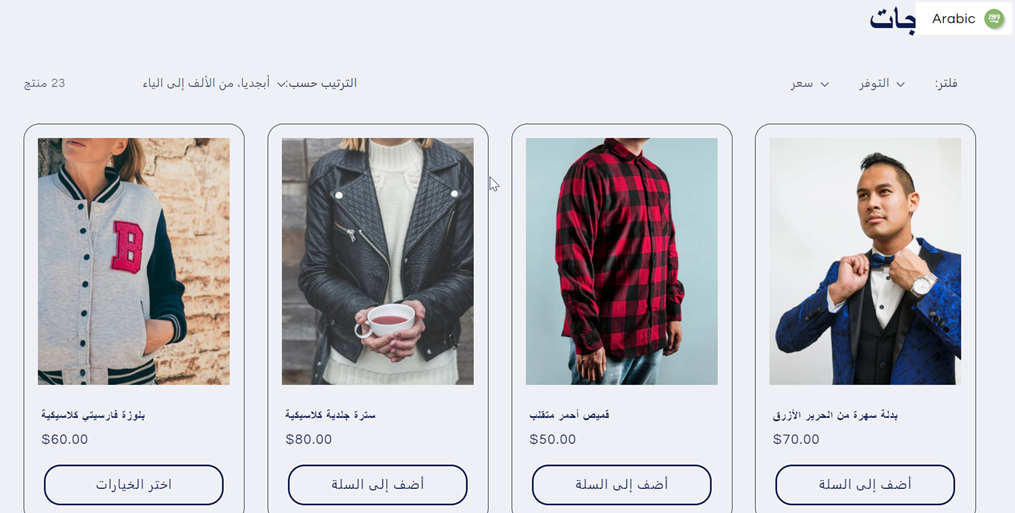
For example, if you’re a U.S.-based fashion brand expanding into Europe, you might start by adding your site’s French, German, and Spanish versions. You could use a professional translation service for your main content and implement a language switcher in the top right corner of your site. For customer support, you might use a combination of multilingual staff and translation tools to handle queries in these languages.
12. Promote your website
Promoting your fashion eCommerce website is crucial for attracting customers and growing your business. Here are some effective strategies to get your brand noticed.
- Search Engine Optimization (SEO): Optimize your product descriptions and blog posts with relevant keywords, create high-quality, fashion-related content to improve your search rankings, ensure your site is mobile-friendly and loads quickly
- Social media marketing optimization: Choose platforms where your target audience is most active (e.g., Instagram, TikTok), share high-quality images of your products and lifestyle shots, use relevant hashtags to increase visibility, consider influencer partnerships to reach a wider audience
- Email marketing: Build an email list by offering incentives (e.g., discount on first purchase), send regular newsletters with new arrivals, styling tips, and exclusive offers, segment your list to send personalized content based on customer preferences
- Pay-Per-Click (PPC) advertising: Use Google Ads to appear in search results for relevant keywords, try retargeting ads to re-engage visitors who didn’t make a purchase
For example, let’s say you’re promoting a new summer collection. You might Send an email to your subscribers with a preview and early access like following example from designmodo.com.

Conclusion
Designing a successful fashion eCommerce website requires careful planning and attention to detail. From selecting the right products and capturing high-quality photos to choosing an appropriate eCommerce platform and implementing user-friendly design, each step plays a crucial role in creating an engaging online shopping experience. Remember to optimize your site for search engines, offer secure payment options, and provide excellent customer service to build trust and loyalty.
As you expand your reach to global markets, consider implementing multi-language support to cater to international customers. Create a Linguise account, which offers an excellent solution for seamlessly translating your website and integrating it with popular eCommerce platforms like Shopify and WooCommerce. By following these best practices and leveraging tools like Linguise, you’ll be well-positioned to create a thriving fashion eCommerce business that resonates with customers worldwide.

